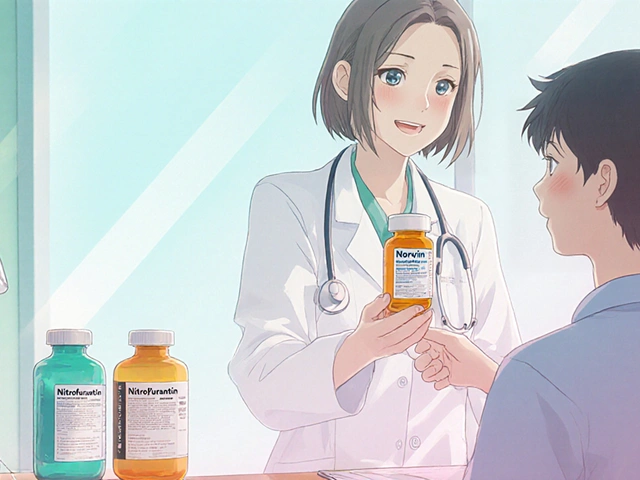Imagine you’re taking a medication that suddenly has a hidden risk. Or your child uses a medical device-like a glucose monitor or a breathing machine-that could fail without warning. Now imagine you found out about it… three weeks later-after a friend posted about it on social media. That’s not hypothetical. It’s what happens when people don’t subscribe to FDA Safety Communications.
The U.S. Food and Drug Administration doesn’t just approve drugs and devices. It watches them after they’re on the market. And when something goes wrong-when a heart monitor overheats, when a batch of insulin is contaminated, when a children’s toy contains unsafe levels of lead-the FDA issues a Safety Communication. These aren’t press releases. They’re urgent, actionable alerts sent directly to patients, doctors, and manufacturers. And if you’re not signed up, you’re flying blind.
What Are FDA Safety Communications?
FDA Safety Communications are official notices about serious risks tied to products the FDA regulates: medicines, medical devices, food, cosmetics, and even tobacco. They’re not the same as recalls. A recall means the FDA has officially ordered a product pulled from the market. A Safety Communication? That’s the early warning. It might say: “This device has caused 12 serious injuries. Stop using it until you talk to your doctor.” Or: “A new side effect has been found in this diabetes drug. Watch for blurred vision.”
In 2022 alone, the FDA’s Center for Devices and Radiological Health issued 45 of these alerts-30 for medical devices and 15 for healthcare providers. That’s just one part of the system. Drug Safety Communications, food safety notices, and recall updates add dozens more every month. These aren’t random updates. They’re based on real data from the FDA Adverse Event Reporting System (FAERS) and the Sentinel System, which tracks medication use across over 300 million people.
Why You Can’t Rely on News or Social Media
Most people hear about recalls through headlines. But here’s the problem: news outlets don’t cover every alert. Social media spreads rumors, not facts. By the time a tweet goes viral, the FDA may have already issued a fix. And if you’re not looking for it, you’ll miss it entirely.
Take the case of a faulty infusion pump. In 2023, a model used in hospitals began malfunctioning under certain conditions. The FDA issued a Safety Communication on a Tuesday. By Friday, five hospitals had switched devices. But a patient in Ohio didn’t know until a nurse mentioned it during a checkup-two weeks later. That delay could have been deadly. The FDA’s system exists to prevent exactly that.
Subscribing ensures you get the alert the same day it’s published. No waiting. No guessing. Just straight, verified information from the source.
The Two Main Ways to Subscribe
There are two key subscription systems you need to know about-and both are free.
1. Enforcement Report Subscription Service
This is your all-in-one recall alert system. It covers everything the FDA regulates: drugs, devices, food, cosmetics, even veterinary products. You sign up once, and you get email alerts whenever a recall is issued.
Here’s the game-changer: you can pick up to five custom keywords. That means you only get alerts that matter to you.
- If you have a peanut allergy, subscribe to “peanut.” You’ll only get alerts about peanut contamination in food or supplements.
- If you use a CPAP machine for sleep apnea, subscribe to “CPAP” or “respiratory device.”
- If you take metformin, subscribe to “metformin.” You’ll be notified if a new batch has a contamination issue.
This isn’t just convenient-it’s life-saving. You won’t be flooded with alerts about baby formula if you’re a 65-year-old with heart disease. You get exactly what you need.
2. Medical Device Safety and Recalls Subscription
As of September 29, 2025, this subscription now covers all medical devices-not just a few categories like before. Before 2024, only devices in areas like heart, kidney, and women’s health were included. Now, it’s everything: insulin pumps, pacemakers, hearing aids, surgical robots, even simple bandages if they pose a risk.
This subscription gives you:
- Medical Device Safety Communications
- Letters to Health Care Providers
- Recall notices
- Updates to previous alerts
It’s especially critical for caregivers, patients with chronic conditions, and anyone using life-sustaining equipment.

Early Alert Communications: The New Layer of Protection
Here’s something most people don’t know: the FDA now sends out Early Alerts before a recall is even official.
Before September 2025, these were only for a few device types. Now, they’re for all medical devices. An Early Alert means the FDA has seen enough reports of harm to believe a device might be dangerous-but hasn’t yet formally decided it violates regulations. That’s the gap between suspicion and proof. And this system closes it.
These alerts include:
- Which products are affected
- What went wrong
- What you should do right now (e.g., “Stop using,” “Contact your doctor,” “Check your serial number”)
- Any reported injuries or deaths
The language is designed to mirror what manufacturers tell their customers. That means you get clear, practical steps-not vague warnings.
Who Should Subscribe? (And Who’s Already Missing Out)
You might think, “I don’t use medical devices. I don’t need this.” But think again.
- Parents: Your child’s inhaler, glucose monitor, or even a teething toy could be flagged. One 2024 alert warned about lead in silicone teething rings.
- Seniors: If you use a hearing aid, blood pressure cuff, or walker, you’re at risk. A faulty blood pressure monitor can lead to misdiagnosis-and dangerous treatment.
- Chronic illness patients: Insulin pumps, dialysis machines, pacemakers-all have been subject to alerts. One 2023 recall affected over 100,000 insulin pumps.
- Healthcare workers: Nurses, pharmacists, and doctors need to know if a drug batch is contaminated or a device fails under stress.
- Manufacturers and suppliers: If you make or sell anything regulated by the FDA, ignoring these alerts is a legal risk. The FDA considers them part of your regulatory obligations.
Not subscribing isn’t just ignorance-it’s negligence. Especially if you’re responsible for someone else’s health.
How to Sign Up (Step by Step)
It takes less than five minutes. Here’s how:
- Go to www.fda.gov/safety/alerts
- Under “Subscribe to FDA Alerts,” click “Enforcement Report Subscription Service” for recalls across all products.
- Enter your email address.
- Choose up to five keywords. Use simple, specific terms: “aspirin,” “insulin,” “CPAP,” “peanut,” “glucose meter.”
- Click “Subscribe.”
- Check your email for a confirmation link. Click it.
For medical device alerts only:
- Go to www.fda.gov/medical-devices/safety-communications
- Click “Subscribe to Medical Device Safety and Recalls.”
- Enter your email and confirm.
You’ll start receiving alerts within 24 hours. Frequency depends on your keywords. Some people get one alert a month. Others get none for months. But when something urgent happens, you’ll know immediately.

What If You Miss an Alert?
The FDA keeps all past Safety Communications archived on their website. You can search by product, date, or keyword at any time. But don’t rely on this. Alerts are time-sensitive. A device recall might have a deadline for returning the product. A drug warning might say: “Stop use immediately.” Delayed action can lead to harm.
If you miss an alert, check your spam folder. Add [email protected] to your contacts. If you still don’t get emails, contact the FDA’s Division of Industry and Consumer Education (DICE) for help.
What’s Next for FDA Alerts?
The system keeps getting smarter. The July 2022 update added keyword customization. The September 2025 expansion added full medical device coverage. Experts are now pushing for:
- Natural language search in subscriptions-like typing “my insulin pump keeps shutting off” instead of picking keywords.
- Integration with electronic health records so doctors get alerts automatically in their patient charts.
- Expanding Early Alerts to drugs and food products, not just devices.
One thing’s clear: the FDA is moving toward faster, more targeted, and more proactive safety communication. If you’re not signed up, you’re falling behind.
Final Thought: This Isn’t Optional
FDA Safety Communications aren’t a luxury. They’re a shield. They’re the difference between hearing about a danger after it’s too late-and acting before it hurts you or someone you love. Whether you’re a patient, a caregiver, or a professional, this is one subscription that costs nothing but could save everything.
Don’t wait for a news headline. Don’t wait for a friend to tell you. Subscribe today. It’s the simplest, most effective way to protect your health-and the health of those who depend on you.
Do FDA Safety Communications cost anything?
No. Both the Enforcement Report Subscription Service and the Medical Device Safety and Recalls subscription are completely free. There are no hidden fees, no premium tiers, and no ads. You only need an email address.
Can I unsubscribe if I change my mind?
Yes. Every email alert includes an “Unsubscribe” link at the bottom. Click it, and you’ll be removed from the list immediately. You can always resubscribe later if you change your mind.
How often will I receive alerts?
It depends on your keywords and what’s happening in the market. Some subscribers get one alert every few months. Others get several a week, especially if they choose broad terms like “drug” or “device.” Most people get between one and four alerts per month. The system is designed to be low-volume but high-impact-only sending alerts when something serious is confirmed.
Are these alerts only for people in the U.S.?
Yes. The FDA’s subscription system is designed for U.S.-based users and products regulated under U.S. law. However, if you live outside the U.S. but use FDA-approved products (like a drug made in the U.S. or a device sold globally), you can still subscribe. The alerts are still relevant because many international manufacturers follow FDA safety guidance.
What if I don’t know the right keywords to use?
Start with the brand name or generic name of the product you use. For example, if you use a Medtronic insulin pump, try “Medtronic” or “insulin pump.” If you take lisinopril, use “lisinopril.” Avoid vague terms like “medicine” or “device”-they’ll flood your inbox. The FDA’s website lists common product names in their alerts, so check past communications for examples of how they refer to products.
Do these alerts include recalls for food and supplements?
Yes. The Enforcement Report Subscription Service covers all FDA-regulated products, including food, dietary supplements, cosmetics, and tobacco. If a batch of protein powder is found to contain heavy metals, or a sunscreen is contaminated with benzene, you’ll get an alert if you’ve subscribed with relevant keywords like “protein powder” or “sunscreen.”
Can I get alerts in languages other than English?
Currently, all FDA Safety Communications and subscription emails are only available in English. However, the FDA provides translated summaries of major alerts on its website in Spanish and other languages. For non-English speakers, consider using browser translation tools or asking a bilingual caregiver to help monitor alerts.
Is there a mobile app for FDA alerts?
No, there is no official FDA app for safety alerts. The only official way to receive them is through email subscription. Be cautious of third-party apps claiming to deliver FDA alerts-they may be outdated, inaccurate, or even scams. Always go directly to FDA.gov to subscribe.
What’s the difference between a recall and a Safety Communication?
A recall is a formal action where the FDA requires a company to remove a product from the market because it violates regulations. A Safety Communication is an earlier warning-it may come before a recall is issued. It alerts the public to a potential risk, even if the FDA hasn’t yet determined the product is illegal. Many recalls start as Safety Communications.
Can I get alerts for my entire family?
Yes. You can subscribe with multiple email addresses-for yourself, your partner, your child’s caregiver, or your doctor. Each person can choose their own keywords. For example, one person might subscribe to “epinephrine” for allergies, while another subscribes to “hearing aid.” There’s no limit to how many people you can set up alerts for.







Comments
Peter Aultman
Just subscribed with 'insulin pump' and 'CPAP'-took 2 minutes. Best 2 minutes of my year. No more guessing if my gear is safe.
Kevin Wagner
This is the single most important public health tool you’ve never heard of. If you’re not signed up, you’re basically playing Russian roulette with your meds and devices. Stop scrolling. Go subscribe. Right now. Your life might depend on it.
gent wood
I appreciate the clarity of this post, and the emphasis on Early Alerts is particularly valuable. Many people conflate recalls with safety communications, but the distinction is critical-early warnings allow for proactive intervention rather than reactive damage control. I’ve been receiving these alerts since 2021, and they’ve prevented two potential incidents in my household alone.
Dilip Patel
USA always overcomplicate things why cant they just send sms like india? all this email and keyword stuff is too much for normal people. i just want to know if my medicine is poison or not. also why no hindi version? i pay taxes too you know
Jane Johnson
It’s interesting how this is framed as a personal responsibility, when in reality, the burden of vigilance should fall on manufacturers and regulators-not patients. If a device can kill you silently, why isn’t the FDA mandating automatic recalls or mandatory manufacturer notifications? This feels like victim-blaming dressed up as empowerment.
Sean Hwang
My mom’s on a pacemaker. I signed her up with 'pacemaker' and 'heart device'. She doesn’t even check email, so I forward the alerts to her phone. Best thing I’ve done all year. Seriously, if you have someone in your life on meds or devices, do this for them. It’s free. It’s easy. It’s everything.
Don Ablett
While the utility of these alerts is unquestionable, one must consider the systemic implications of relying on individual subscription models for public health safety. The absence of a centralized, automated, and universally accessible notification infrastructure suggests a fragmentation of responsibility that disproportionately affects elderly, low-literacy, and non-English-speaking populations. The current system is efficient for the digitally literate, but it is not equitable. One might argue that public health alerts should be embedded within clinical workflows rather than left to consumer initiative.
Barry Sanders
Of course the FDA makes this complicated. They want you to feel like you’re doing something heroic by subscribing. Meanwhile, they’re still approving devices with known failure modes. This is performative safety. You’re not protecting yourself-you’re just accepting the burden of their negligence.
Chris Ashley
bro i just signed up for 'aspirin' and 'ibuprofen' and now i get like 3 emails a week. this is insane. i just want to take pills without thinking about it. can i unsubscribe??
Brittany C
From a clinical informatics perspective, the lack of EHR integration is a glaring gap. The current model assumes patients are the primary agents of safety, yet the most reliable vector for dissemination remains the provider. If FDA alerts were pushed as clinical decision support alerts within Epic or Cerner, adoption would be near universal. The current email-based system is a relic of 2008-era digital health infrastructure.